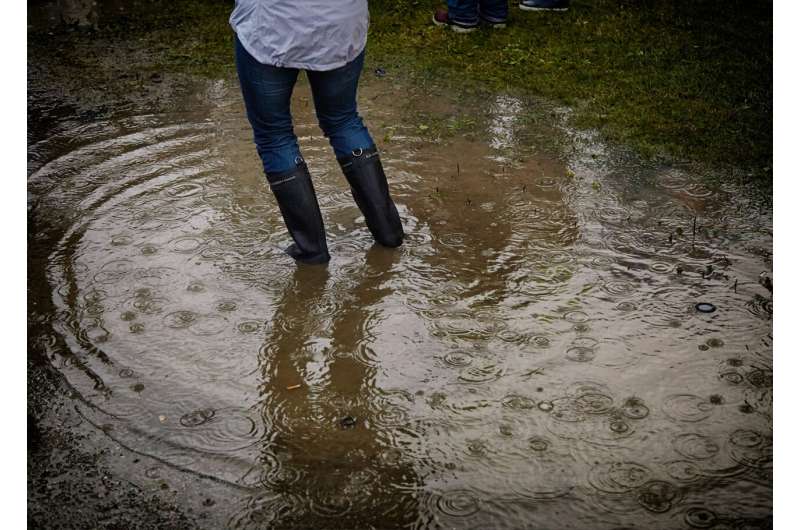This article has been reviewed according to Science X's editorial process and policies. Editors have highlighted the following attributes while ensuring the content's credibility:
fact-checked
peer-reviewed publication
trusted source
proofread
New Zealand's wettest and driest spells to become more extreme, says study

A new study shows how a warming climate will impact New Zealand's wet and dry weather extremes, giving decision-makers the power to plan for the future.
Led by the University of Waikato's Dr. Luke Harrington, Senior Lecturer in Climate Change at Te Aka Mātuatua School of Science and involving colleagues from NIWA and the University of Canterbury, the study uses a larger set of climate model data than what has previously been available to show how frequently New Zealand regions experience high and low rainfall extremes in a warmer world.
The research, published in Environmental Research Letters, quantifies for the first time how the unevenness of New Zealand's rainfall across a year is expected to change with climate warming.
The researchers use this larger data set, which allows more confidence in expected changes, to show how New Zealand's wettest and driest days of the year respond to a 3°C rise in global temperature.
"We found that many regions experience significant changes in the amount of rain falling during both the wettest and driest spells, despite having shown only a minor change in annual average rainfall," Dr. Harrington says.
The study estimates that regions which show no change in annual average rainfall in a 3°C warmer world are likely to see their wettest days of the year producing at least 10% more rainfall than in the current climate, and their driest days of the year producing at least 10% less.
"This rule of thumb can serve as a powerful tool for people on the ground to plan for what an average year might look like on a day-to-day basis in the future. We find more extreme dry spells punctuated by increasingly supercharged rainfall events," Dr. Harrington says.
"These projected changes are further evidence of the challenges that will need to be confronted as global temperatures continue to increase rapidly."
The study uses thousands of simulations from the Weather@Home regional climate modeling experiment for the Australia-New Zealand region, made available by donated computing power from thousands of volunteers.
Climate scientist Dr. Suzanne Rosier from NIWA has played a key part in maintaining the Weather@Home-ANZ project and was involved in Dr. Harrington's research.
"Rainfall projections over Aotearoa often focus on average changes over seasons and years because we've previously lacked the large datasets needed to be confident in more nuanced changes at the daily scale," Dr. Rosier says.
"Our new analysis overcomes these challenges. Another of our findings is that, even regions that do show a change in the annual mean rainfall still exhibit changes in how that rainfall arrives: for example, we see increases in the number of years with 'drought-busting' extreme rainfall yet at the same time as much as a three-fold increase in the number of extreme dry years."
Also involved in the study were Professor Dave Frame and Master's student Tom Marsh from the University of Canterbury.
"A common phrase to explain climate change is 'the wet get wetter and the dry get drier.' This normally describes wet regions of the world experiencing more rainfall in the future, while dry regions suffer more intense drought periods," Professor Frame says.
"Because we don't expect huge changes in total rainfall, people in New Zealand can get a bit complacent about future rainfall challenges. This research shows we can expect the worst of both worlds to happen simultaneously for many regions of Aotearoa as temperatures continue to rise."
More information: Luke J Harrington et al, Robust changes to the wettest and driest days of the year are hidden within annual rainfall projections: a New Zealand case study, Environmental Research Letters (2024). DOI: 10.1088/1748-9326/ad585a
Journal information: Environmental Research Letters
Provided by University of Waikato



















